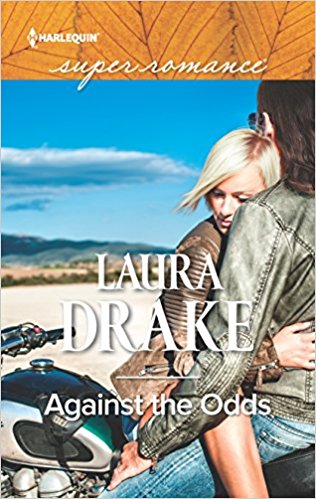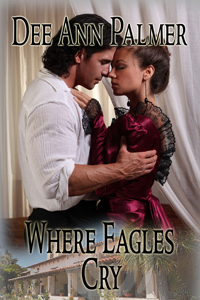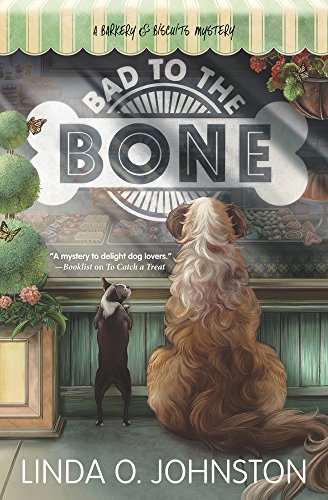Happy New Year
December 31, 2022 by marianne h donley in category Apples & Oranges by Marianne H. Donley tagged as 2023, A Slice of Orange, happy new yearHappy New Year
We wish you all prosperity, joy, and success this new year. From everyone at A Slice of Orange.
1 0 Read moreWelcome!
April 1, 2017 by marianne h donley in category Apples & Oranges by Marianne H. Donley tagged as A Slice of Orange, Authors, Marianne H. Donley, The Extra Squeeze, Welcome
Welcome. Welcome. Welcome, to the all new A Slice of Orange.
Our new website is up, running, and ready for you to explore.
Boy, have we changed!
In addition to our lively and informative posts, we now have a Book Store featuring the titles of our authors and guests. We have a page dedicated to books On Sale (or free) and a New Release page. Our Events page features Contests for both published and unpublished authors, Conferences, Online Classes and workshops and Reader events.
If you are a long time reader of A Slice of Orange you will find your favorite writers, Jann Ryan, Tracy Reed, Linda O. Johnston, Kitty Bucholtz, Jina Bacarr, Rebecca Forster, Linda McLaughlin/Lyndi Lamont, Meriam Wilhelm, Isabel Swift, and Geralyn Corcillo still writing columns every month.
We are pleased to introduce several new bloggers to A Slice of Orange: H.O. Charles, Tari Lynn Jewett, Denise Colby, Sally Paradysz, Jenny Jensen, Robin Blakely, Veronica Jorge and partners Janet Lynn and Will Zeilinger.
On the last day of every month, we will feature The Extra Squeeze–four different perspectives on one topic. The team consists of Rebecca Forster, H.O. Charles, Jenny Jensen, and Robin Blakely. This month they will be tackling sensitivity editors. You can read this article from the Chicago Tribune now and then come back on April 30th to see what The Extra Squeeze thinks about the subject. You can also get in on the fun by asking questions or proposing topics you would like to see the team cover. Use The Extra Squeeze contact form to send them your ideas.
We’ve come a long way from 2006 and that small blog written by authors from Orange County, California. We now include not just California authors but with authors from the UK, all across the US to New Zealand–we nearly span the globe. We hope you poke around, read some posts, buy some books. Then, let us know how you like our new and improved version of A Slice of Orange.

Marianne H. Donley
A Slice of Orange
5 0 Read more
Best Writing Tips for 2016 by Connie Vines
January 13, 2016 by A Slice of Orange in category Archives tagged as A Slice of Orange, Connie Vines, RWA, top tips 2016 for writers, writing tipsIt’s a new year, a new novel, and a time revisit the basics.
As the commercial says, “Just Do it.†Just write.
Read as much and as often as you can. Remember, every writer is a reader first.
Keep a journal or notebook handy to jot down your ideas. If you’ve got a smartphone, download a note-taking app. A voice-recording app also comes in handy for recording notes and ideas.
Make sure you have a dictionary and thesaurus available whenever you are writing. Dictonary.com is also a great resource.
Be observant. People and activities will provide you with great inspiration for characters, plots, and themes.
The Chicago Manual of Style and The Elements of Style are a must for your book shelf.
Grammar: learn the rules and then learn how to break them effectively.
Stop procrastinating.
Read works by highly successful authors to learn what earns a loyal readership.
Join a writers’ group.
Create a space in your home especially for writing (I covered this topic in an earlier blog).
Proofread everything at least three times before submitting your work for publication.
Start a blog. Use it to talk about your own writing process, share your ideas and experiences, or publish your work to a reading audience.
Subscribe to writing blogs on the Internet. Read them, learn, share, and enjoy!
Let go of your inner editor. When you sit down to write a draft, refrain from proofreading until that draft is complete.
Make it your business to understand grammar and language.
You are a writer so own it and say it aloud: “I am a writer.â€
Write, write, write, and then write some more.
Most importantly, love your craft and always, always fall in love with your heroes.
Wishing you a happy 2016,
Connie Vines
 |
| coming soon |
Software Programs for Writers by Connie Vines
December 13, 2015 by A Slice of Orange in category Archives tagged as A Slice of Orange, Connie Vines, OCC Slice of Orange, publishing, Software Programs, writing processI also began to wonder exactly how many programs I used when writing, plotting my novels, balancing the reading levels for my YA stories, etc. I feel the content would be of interest to writer, readers, and those who man be looking for a program help them make it through the rigors of an AP, university level, or an extension class.
My go-to program is Power Structure purchased via Write-Brain.com. Since I work in segments: Chapter 1 – 3, etc. rather than scene-by-scene or chapter-by-chapter, this program is adaptable to my thought process. I am able to work in three Acts, Chapters, Scenes, or any structure model of preference.
Conflict, Subplot, plot point. You can also change almost any term used in Power Structure to suit your personal preference. Long ago attended a class held at OCC using a writer’s workbook written by Chris Vogler, a Hollywood screen writer, who uses Joseph Campbell’s “A Hero’s Journey” as a plotting bible. Since I have followed Joseph Campbell’s works and find the “A Hero’s Journey” the best way for me to write a story.
Beverly also mentioned Dramatica Pro. Pricey, yes. I believe for characterization, especially for detailed historical novels, or when writing a continuing series, this program was a good investment.
A Plot Progression Window allows me to examine where to place a pivotal point. There is also a Spin-the-Model Brainstorming option. This helps when, heaven forbid, I have writer’s block–and much, much less painful than pounding my forehead on mt desk until my muse comes up with a plan.
On my iPad I have several program: My Writing (which I seldom open), A Novel Idea (where I have grains of thoughts/names of future novels) this takes the place of scribbles from my lip liner on discarded pieces of paper I’d find in the depths of my tote bag. I Do Notepad & I Do Notepad Pro that I will use but it have a devil of a time retrieving what I have saved.
The Journal app is good for free-flowing thought/plotting etc. and also for using as a writer’s journal. You can create labels, change the font and even add a background picture. This is where I many place the notes from my character interviews.
The Power of Emotion by Connie Vines
August 13, 2015 by A Slice of Orange in category Archives tagged as A Slice of Orange, Cajun Romance, Connie Vines, Emotion, H.O.L.T. Medallion, Native American Romance, Rodeo Romance, Writing Emotion|
synonyms:
|
|
synonyms:
|
|
Blog.
Please stop by next month.
 |
| Fall Release: BWL, Ltd. |
 |
| Novella, BWL, Ltd., current release |
Affiliate Links
A Slice of Orange is an affiliate with some of the booksellers listed on this website, including Barnes & Nobel, Books A Million, iBooks, Kobo, and Smashwords. This means A Slice of Orange may earn a small advertising fee from sales made through the links used on this website. There are reminders of these affiliate links on the pages for individual books.
Search A Slice of Orange
Find a Column
Archives
Featured Books
STARTING OVER WITH THE SHERIFF
Starting anew? But what if he learns the truth?
More info →WHERE EAGLES CRY
Jilted by love in 1834, Cara Lindsay sails from Boston to Mexico’s rugged California to begin a new life with a favorite aunt.
More info →Newsletter
Contributing Authors
Search A Slice of Orange
Find a Column
Archives
Authors in the Bookstore
- A. E. Decker
- A. J. Scudiere
- A.J. Sidransky
- Abby Collette
- Alanna Lucus
- Albert Marrin
- Alice Duncan
- Alina K. Field
- Alison Green Myers
- Andi Lawrencovna
- Andrew C Raiford
- Angela Pryce
- Aviva Vaughn
- Barbara Ankrum
- Bethlehem Writers Group, LLC
- Carol L. Wright
- Celeste Barclay
- Christina Alexandra
- Christopher D. Ochs
- Claire Davon
- Claire Naden
- Courtnee Turner Hoyle
- Courtney Annicchiarico
- D. Lieber
- Daniel V. Meier Jr.
- Debra Dixon
- Debra H. Goldstein
- Debra Holland
- Dee Ann Palmer
- Denise M. Colby
- Diane Benefiel
- Diane Sismour
- Dianna Sinovic
- DT Krippene
- E.B. Dawson
- Emilie Dallaire
- Emily Brightwell
- Emily PW Murphy
- Fae Rowen
- Faith L. Justice
- Frances Amati
- Geralyn Corcillo
- Glynnis Campbell
- Greg Jolley
- H. O. Charles
- Jaclyn Roché
- Jacqueline Diamond
- Janet Lynn and Will Zeilinger
- Jaya Mehta
- Jeannine Atkins
- Jeff Baird
- Jenna Barwin
- Jenne Kern
- Jennifer D. Bokal
- Jennifer Lyon
- Jerome W. McFadden
- Jill Piscitello
- Jina Bacarr
- Jo A. Hiestand
- Jodi Bogert
- Jolina Petersheim
- Jonathan Maberry
- Joy Allyson
- Judy Duarte
- Justin Murphy
- Justine Davis
- Kat Martin
- Kidd Wadsworth
- Kitty Bucholtz
- Kristy Tate
- Larry Deibert
- Larry Hamilton
- Laura Drake
- Laurie Stevens
- Leslie Knowles
- Li-Ying Lundquist
- Linda Carroll-Bradd
- Linda Lappin
- Linda McLaughlin
- Linda O. Johnston
- Lisa Preston
- Lolo Paige
- Loran Holt
- Lynette M. Burrows
- Lyssa Kay Adams
- Madeline Ash
- Margarita Engle
- Marguerite Quantaine
- Marianne H. Donley
- Mary Castillo
- Maureen Klovers
- Megan Haskell
- Melanie Waterbury
- Melisa Rivero
- Melissa Chambers
- Melodie Winawer
- Meriam Wilhelm
- Mikel J. Wilson
- Mindy Neff
- Monica McCabe
- Nancy Brashear
- Neetu Malik
- Nikki Prince
- Once Upon Anthologies
- Paula Gail Benson
- Penny Reid
- Peter J Barbour
- Priscilla Oliveras
- R. H. Kohno
- Rachel Hailey
- Ralph Hieb
- Ramcy Diek
- Ransom Stephens
- Rebecca Forster
- Renae Wrich
- Roxy Matthews
- Ryder Hunte Clancy
- Sally Paradysz
- Sheila Colón-Bagley
- Simone de Muñoz
- Sophie Barnes
- Susan Kaye Quinn
- Susan Lynn Meyer
- Susan Squires
- T. D. Fox
- Tara C. Allred
- Tara Lain
- Tari Lynn Jewett
- Terri Osburn
- Tracy Reed
- Vera Jane Cook
- Vicki Crum
- Writing Something Romantic
Affiliate Links
A Slice of Orange is an affiliate with some of the booksellers listed on this website, including Barnes & Nobel, Books A Million, iBooks, Kobo, and Smashwords. This means A Slice of Orange may earn a small advertising fee from sales made through the links used on this website. There are reminders of these affiliate links on the pages for individual books.











































